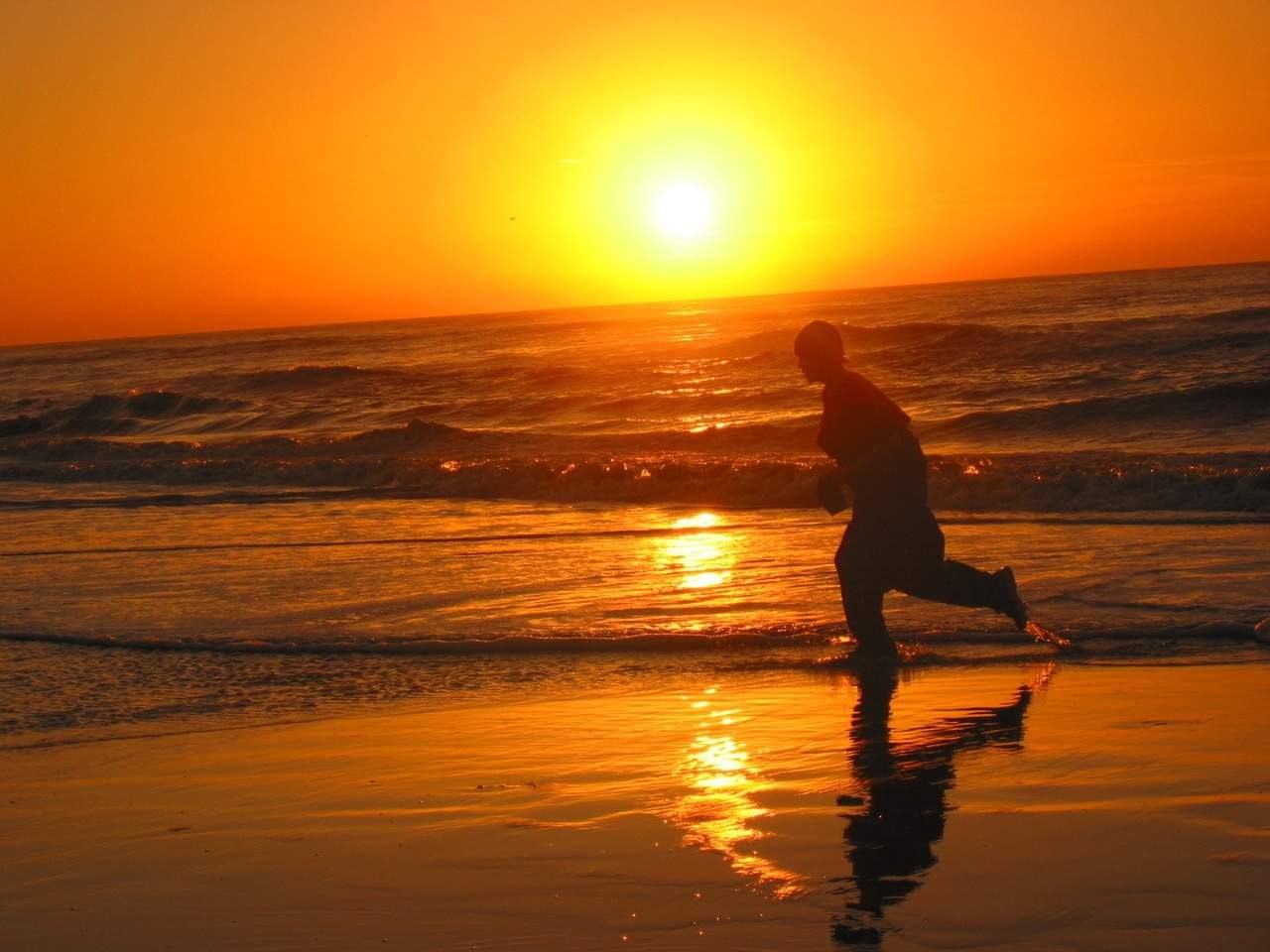As runners we are always looking for an edge.
What can I do that will help me run a little faster, and longer? What will help me gain strength and avoid injury?
Beach running can help with all of these. It is an excellent cross-training exercise for all athletes.
Even if your only aim is to mix up your workouts a little bit, you should definitely look into running on the sand.
In this video, bodybuilder Peter Zane shares some tips for running on hard sand, to help you improve your speed and distance, and how to do reduce your risk of injury while doing so. He also gives both a beginner and advanced regimen for a cardio workout by running on soft sand
Tip #1 – Where to Find the Best Sand
If you’re near the ocean, that is going to be your best bet.
A lake can be an alternative if an ocean beach is not available.
When running on an ocean beach, run just above the water line. The sand will be hard enough for you in that position. The ideal time is about two hours before low tide.
Two hours before low tide is ideal because the sand will be almost as hard as pavement, but will still give you a bit of cushioning. As the tide goes out, the sand is packed into a near-perfect running surface.
Of course, you can run on soft sand too, but that is a different kind of workout! At the end of the video, Peter gives instruction for running on soft sand.
Is Barefoot Really Better?
Peter recommends running barefoot on the sand. If you want to use toed shoes, great! You will get the same kind of benefits to running barefoot.
Turns out there’s much disagreement amongst experts regarding the “barefoot or shoe” question when running on the beach. Several experts were cited in this article in GQ magazine.
As always, do your own due diligence in the form of research and/or consulting your own doctor regarding any training regimen.
Tip #2 – Barefoot Walking Before Running
Peter Zane recommends starting with barefoot walking first, for about a month or so. Shoot for three times a week for 45 minutes.
Here’s why: your ankles are used to walking on a flat surface.
When walking or running on the beach, your ankles are crooked, even if only slightly, They are not used to that kind of load. Your ankles need to build up their strength before you are ready for running on the beach.
By walking on the sand for a month or so, Peter explains, your ankles will become stronger and you will reduce the risk of injuring them, once you start running.
Tip #3 – Ease into Barefoot Running
After your first month of walking on the beach, Peter recommends a “hybrid” approach for the next month as follows:
- On pavement, run for twenty minutes with your running shoes on.
- Then take your shoes off, and jog on the beach in one direction for ten minutes.
- Finally, turn around and jog the other direction for ten minutes.
For each month thereafter, gradually decrease your time on the pavement and increase your time on sand, until you are eventually doing the entire time on the beach.
After that, you can increase your distance if that is your goal.
If Peter has not convinced you so far, Runner’s World also lists some of the benefits to beach running.
Tip #4 – Running on Soft Sand – Beginner HIIT and Workout
If you only have soft sand available, Peter suggests the following routine for beginners (see the next tip for advanced runners):
- 5 minutes: 5 reps of sprint 20 seconds, walk 40 seconds.
- 5 minutes: 5 reps of 20 seconds sand burpees, 40 seconds rest.
- 5 minutes: burp-jogs, do 20 seconds burpees, then jog 40 seconds.
- 5 minutes: sand running
Tip #5 – Running on Soft Sand – Advanced HIIT and Workout
For more advanced runners and other athletes, here is a somewhat more rigorous workout:
- 5 minutes: 5 reps of sprint 40 seconds, walk 20 seconds.
- 5 minutes: 5 reps of 40 seconds sand burpees, 20 seconds rest.
- 5 minutes: burp-jogs, do 40 seconds burpees, then jog 20 seconds.
- 5 minutes: sand running

